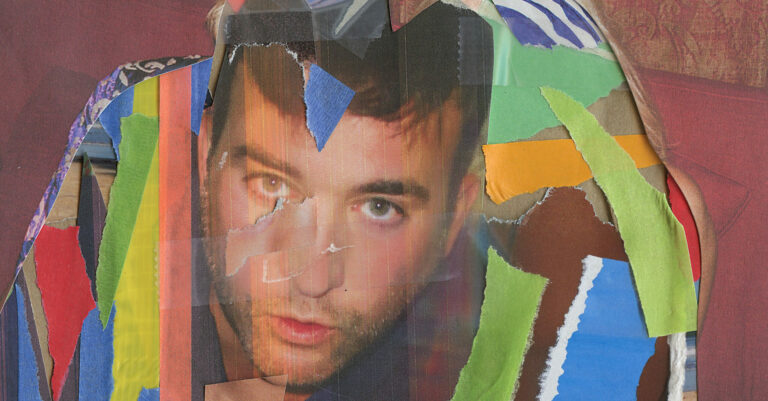In autumn 2023, University of Minnesota Press published Godzilla and Godzilla Raids Again, a two-novella volume based on the first two films in Toho Studios’s Godzilla film series. Both were written by prolific science fiction author Shigeru Kayama, who also penned the original scenarios from which the films in question were based. The publication of these novellas in English—the first in history—is a major landmark for science fiction fans. And now, Our Culture is honored to interview Jeffrey M. Angles, professor of Japanese at Western Michigan University, and the translator of these two books.
Thank you for this interview. In starting off, could you please tell us how your interest in Japan and Japanese literature began?
Of course, I’m more than happy to! I was lucky enough to have some Japanese friends when I was young, including a Japanese exchange student who stayed with my uncle for a year; so when I had the opportunity to study abroad as a teenager, I eagerly headed to Japan. It was an eye-opening experience for me, especially since I had never been anywhere other than the American Midwest and South at that time. I was fascinated with the language, the landscape, the culture, the food, and the literature, and my friendships with all my new Japanese friends just made me want to learn more and engage at a deeper level.
I majored in Japanese in college, went back to Japan on a business internship, and then after college worked there for some time. By this point, I was reading books in Japanese, and so I combined my two passions—Japan and literature—by going to graduate school to study Japanese literature. Right off the bat, I knew I was interested in translation.
Godzilla and Godzilla Raids Again is not the first Japanese book project you’ve worked on. You’ve translated many Japanese books prior to these novellas. Did your interest in Japanese literature—and being familiar with so many texts presumably not available in English—fuel an interest in translating?
It definitely did. We only get the tiniest drop of what’s published in Japanese in English translation, and I want to use my abilities as a translator to amply voices that deserve to be heard. Most of my translations so far have been either of literature written in the 1920s and 1930s or of contemporary literature—the literature of the past few decades or so. And very often, I’ve focused on the voices of women, queer, and socially engaged writers since they tend to get short shrift in translation.
The 1920s and 1930s are an especially dynamic time in Japanese literary history, and that was the time period about which I wrote my dissertation. There was so much being written that people who don’t read Japanese would be astonished! You find wild formal experimentation. You find an outpouring of adventure and mystery stories. You find popular writing filled with attention-grabbing eroticism, bizarre grotesquerie, and all sorts of surprising plot twists. You find serious authors engaging at a very deep level with the Western literature that was being translated in Japan. I love lots of that writing, and I think that English readers would too.
Actually, Kayama, the author who wrote the Godzilla novellas I’ve just translated, grew up during this era, and so the traces of this dynamic moment show up throughout his work. The connections between the sensibilities of that prewar moment and Kayama’s moment in time just after World War II were one thing that drew me to him.
Let’s now discuss Godzilla and Godzilla Raids Again. How did you become involved in this project? Did you have previous interest in Godzilla and/or the works of Shigeru Kayama?
As a kid, I did enjoy catching bits and pieces of Godzilla films on TV and watching kaiju trample on cities. Those films provided a bit of vicarious excitement in my suburban life, where excitement was so conspicuously absent. However, my childhood affection for kaiju films didn’t turn into an academic interest until fairly recently.
I was in Japan during the 2011 earthquake, tsunami, and Fukushima meltdown—the Triple Disaster, as it is sometimes called—and this was an experience that shook me to the core. (No pun intended.) After returning, I began thinking a lot about how Japanese writers and filmmakers had reflected on disasters over time, and I started a course on disaster in literature and film at Western Michigan University, where I teach.
I put the original Godzilla from 1954 on my syllabus to encourage a rethinking of a story that was at least somewhat familiar to most students. For those who know it, the original Godzilla film is a deeply powerful, mournful film that isn’t just about a big monster stomping on buildings. It is a serious reflection on Japan’s nuclear fears during the Cold War, which left it caught between heavily armed superpowers. Japan recognized that radioactive weapons of mass destruction being developed by the U.S. and U.S.S.R were threats that had the power to suddenly emerge and destroy its citizens and cities at any moment—like Godzilla. We should remember that in the film, it was hydrogen bomb testing in the Pacific that disturbed Godzilla, who then took revenge for his destroyed habitat by trampling Tokyo and blasting it with atomic rays.
As I showed the movie a couple of times, I became intrigued by the line in the Japanese opening credits that said, “原作・香山滋,” meaning “Based on the work of Shigeru Kayama.” I recognized Kayama as the name of one of the most popular, pulpy science fiction writers of the mid-twentieth century—a figure who is a little bit like Philip K. Dick in this country, but more oriented toward animals and the natural world than Dick, who focused his attention mostly on technologically augmented human experience.
However, in the English-language scholarship I had read about Godzilla, Kayama’s name only appeared in passing. I wanted to know about his involvement, and once I started reading about it more in Japanese, it didn’t take long to realize he was the key person who developed the contours of the Godzilla story. I think it is no exaggeration to say that he perhaps the closest to being Godzilla’s real father than anyone else. Without him, the monster we have today wouldn’t exist.
I found that after sketching out the first two Godzilla movies for Toho, he wrote these novellas, which are easily available in Japan. In fact, they are sitting on the shelves of just about every large bookstore in a paperback edition by Chikuma Shobō. Since scholars have studied virtually every frame of the vintage Godzilla films, I was completely dumbstruck that no scholars in the English-speaking world had seriously examined these important texts yet. After all, they’re by the same famous author who wrote the movie scenarios! They’ve sold so many copies and been reprinted so many times over the years! So, why weren’t they ever translated? Maybe because young adult fiction from abroad gets virtually no attention in the West. Maybe because people think first and foremost of Godzilla as a cinematic phenomenon.
In any case, this seemed like an opportunity. After checking with the Japanese publisher about the availability of the English-translation rights, I pitched the project to University of Minnesota Press, which in recent years has published several translations of important Japanese sci-fi writers. I hope some readers of this interview check out Minnesota’s translations of some of Japan’s other first-rated sci-fi writers: Mariko Ōhara, Chiaki Kawamata, and Yoshio Aramaki. They are nothing short of mind-bending!
In your essay for this book, you mention Kayama’s work is quite accessible in Japan and still has a following there today. How familiar are you with other works of Kayama’s, and could you tell readers about other stories you’ve read by this author?
Kayama was a prolific author. His collection of complete works stretches fourteen thick volumes, plus one additional thick appendix. The whole thing completely fills a shelf. There is a lot in there—short stories, novels, novellas, radio dramas, countless essays… I’ve read a bunch of the more famous works. A couple of notable stories are his debut work “The Revenge of Oran Pendek” from 1947 and “The Strange Tale of the Sea Eel Estate” from 1948, which won the first Detective Mystery Club’s New Writer Award, thus launching his career.
Kayama was fascinated with paleontology and zoology, and it was clear that he also loved adventure tales. Not surprisingly then, many of his stories combine elements of these things. For instance, “The Revenge of Oran Pendek” is a mystery-adventure story that involves humanity encroaching on the environment of a previously unknown ancient great ape, who then lashes out. What we see in this story isn’t dissimilar to Godzilla, in which an ancient dinosaur-like creature lies dormant until mankind destroys his environmental habitat with hydrogen bomb testing.
One of the things that makes Kayama’s writing so charming is that he combines elements of mystery, adventure, and science in pulpy stories designed to get audiences thinking. I write about this in the afterword, but American audiences in the twenty-first century tend to think about mysteries, adventure stories, science fiction, and stories of “the weird” (for lack of a better term) as separate genres; however, in mid-century Japan, these were not necessarily any clear boundaries between these subgenres.
In fact, the things that Kayama read in his youth, such as the pre-World War II magazine Shin seinen (New Youth), put these types of stories back-to-back, and many stories in that magazine incorporated elements drawn from all of them. Kayama carried a similar sensibility over into the postwar period when he began publishing his work in 1947, not long after the war ended in 1945.
What are some of the difficulties of translating Japanese to English? Is it a matter of simply matching words, or is it more complicated?
Oh, gosh! Translation is much, much, much more complicated than just doing a word-to-word replacement. To start off, let me say the Japanese language is structured completely differently than English. For instance, in a Japanese sentence, there is often no subject if it is understandable through context. Verbs are usually the last word in a sentence; they do not near the beginning like in English. There is no distinction between plural and singular. Idioms are radically different, and what people say in a particular situation differs between Japanese and American culture. Plus, there are local language variations—the West of Japan often has different vocabulary and sometimes even different grammar than the East.
Not only that, Japanese has complex rules regarding the way that the hierarchical relationship between individuals. You can easily tell from a single sentence what the relationship is between two people—if one person is higher-ranking than the other, if one person feels friendly toward the other, if the one person is lower on the social totem pole than the other, etc. Those are things that are hard to handle in English, which doesn’t typically foreground the same information.
A translator has to think about all of these things. But most importantly, a translator needs to think about how a text feels in the original language and to try to reproduce that experience for the reader. So, for instance, if a particular passage is funny in the original, it should be funny in the translation. If it feels straightforward and simple in the original language, then it should feel that way in English. That sounds easy, but strangely, it is not, because the elements that each language records don’t necessarily convey exactly the same things.
And I haven’t even talked about cultural differences yet! Needless to say, there are differences between each country’s culture and history. History is relevant in the case of Kayama’s novellas. For instance, we learn right at the beginning that the two protagonists were evacuated to the mountains together. A Japanese reader in 1954 would immediately recognize that this was a reference to the Japanese government’s plan to take children out of the major cities during the latter part of World War II so that they would be safe from Allied firebombing raids, but an American reader in 2023 doesn’t know how the firebombing raids touched the lives of every urban citizen during the war.
Somehow, the translator has to fill in the cultural and historical gaps so that the reader isn’t scratching their head. I chose to fill in that information with a relatively unobtrusive glossary at the end of the translation, which provides some cultural and historical details to flesh things out for interested readers.
Kayama’s Godzilla and Godzilla Raids Again were written in the 1950s. Has the Japanese language changed since that time, and did that present challenges in translating?
The Japanese language has changed somewhat since the 1950s in terms of some minor word choices here and there, but modern audiences have almost no trouble understanding it.
One of the biggest changes is that women tended to speak to men in what sounds today like extraordinarily polite, almost obsequious language, filled with honorifics that mark the man as being higher on the social totem pole. (We have to remember that Godzilla came out in Japan a few years before Leave it to Beaver in the United States. It was a time of radical inequality between genders, not just in Japan but elsewhere too.) In the book, one of the protagonists, Emiko, is a passionate, kind woman who moves the action of the story forward in several key scenes, but she uses language that some modern readers would find almost ridiculously deferential and quaint.
Although I’m definitely in favor of equality of the sexes, I realize it would be a mistranslation to make her speech sound as casual and as forceful as some of her male interlocutors, and so I had to think about how to capture her linguistic personality on the page. As a result, I tried to make her speech a little more formal and refined than, say, some of the male characters.
What are some of the major differences between Kayama’s original scenarios/novellas and their film counterparts?
When it comes to the first Godzilla film from 1954—the one that started it all—there were lots of significant changes between the scenario that Kayama gave to Toho in May 1954 and the finished movie that opened nationwide in November later that same year. Interestingly, in the novellas that I’ve translated, Kayama sometimes restored elements that the director and his assistants removed in the moviemaking process.
Perhaps the most noticeable one is that in the scenario, Kayama wanted to begin with a long voice-over that talks directly about the horrors of atomic and hydrogen bombs. He envisioned that as the voice was speaking, the screen would show images from historical footage of Hiroshima and Nagasaki, as well as images of the tremendously unlucky (and ironically named) fishing vessel Lucky Dragon No. 5, which accidentally found itself in the path of an H-bomb test in the South Pacific in early 1954. (The horrific fate of this boat directly inspired the producer at Toho Studios to make the film.)
However, the director of the film, Ishirō Honda, and his assistant who helped with the screenplay both felt that this kind of direct commentary was too direct for a popular film, and so they toned down the “protest” element in the story. It’s clear that they, like Kayama, wanted Godzilla to serve as a monstrous embodiment of radiation and all of the destruction that it could bring, but they also didn’t point fingers at the U.S. military which had dropped the atomic bombs on Hiroshima and Nagasaki and was busily developing even more horrifying weapons. After all, the U.S.S.R. had built its own arsenal, and so nuclear weapons no longer belonged to a single country—the threat was broader than that. Plus, protest films rarely attracted a big, popular following. So, Honda and his crew toned down the outspoken language and imagery, but there was still imagery left enough for viewers in 1954 to recall Hiroshima, Nagasaki, and the Lucky Dragon. Interestingly, when Kayama published the novellas, he included an author preface that talks about the anti-nuclear movement and encourages readers to read Godzilla and Godzilla Raids Again as his contribution to that movement.
Another change has to do with the protagonist. Kayama seems to have envisioned the adolescent character Shinkichi, who comes from the same island where Godzilla first appeared, as the main protagonist in his film; however, when Honda reworked Kayama’s scenario into a screenplay, he recentered the action on another character, Ogata, who was perhaps around thirty years old. Honda also turned Ogata into the main love interest of the female protagonist Emiko, thus highlighting an element of romance in the story. When Kayama wrote the novella, he put Shinkichi back at the center of the story. I suspect that he wanted to do that for two reasons: (1) to appeal to the adolescent readers who were the main audience for his novella, and (2) to draw a distinction between the actions of the wartime generation, who seemed unsure about their ethical responsibilities when it came to scientifically developed weapons of mass destruction (WMDs), and the postwar generation, who had a clearer sense of right and wrong when it came to that same subject.
In an interview with Rain Taxi discussing your translation of Hiromi Ito’s The Thorn Puller, you mentioned how reader feedback inspired you to make changes in your translation, to better convey Ito’s humor. I understand feedback from your students influenced your translation of Godzilla and Godzilla Raids Again. Could you discuss how their feedback influenced your work on these novellas?
My students in the “Disaster in Modern Japan” class at Western Michigan University were the first to read my draft of the Godzilla novellas, and they gave me lots of impressionistic feedback that helped guide some of my choices. Kayama uses tons of onomatopoeias in the book. It is a clanging, banging, roaring, noisy text, filled with sound, especially in the sections where Godzilla is raging through Japan’s cities. Students liked that aspect, telling me that all the sound words reminded them of manga and American comics, and so I endeavored to keep as much sound as I could in the translation, even when the numbers of onomatopoeias reach levels that contemporary English readers might find off-putting. After all, that was one of the characteristics of Kayama’s style.
More importantly, there is no indication in the text anywhere of Godzilla’s gender. Pronouns aren’t used nearly as often in Japanese as in English, where every single sentence requires a subject. In Japanese, if something is understood through context, it is dropped, so “Raised hand and smashed building” is a perfectly good, complete sentence in itself in Japanese. However, in English, we would need to put a subject and possessive pronoun in there: “Godzilla/he/her/it/they raised his/her/its/their hand and smashed a building.” It wasn’t possible to avoid the question of gender in English like one can in Japanese.
In my first draft, I tried to avoid the subject by using the pronoun “it” to refer to Godzilla, but students rebelled. Godzilla has so much personality that “it” seems too distancing and oddly impersonal. But if not “it,” then what? Some dinosaurs appear to have been hermaphroditic, so I thought it was possible perhaps that might be the case with Godzilla. I tried using “they” in the contemporary sense of someone who is non-binary or non-gender conforming, but that introduced textual confusion in scenes where Godzilla was attacking people. Was the “they” referring to Godzilla or the people whom he was attacking?
After great internal debate, I decided to follow the prevailing notion out there in fandom and popular culture that Godzilla was a “he.” My justification is this. Kayama says right in the introduction to the novella that Godzilla represents a stand-in for nuclear weaponry and all of the destruction that it can bring. Who developed those weapons? Robert Oppenheimer and the U.S. military, which was overwhelmingly male in the 1950s. If it was men who were responsible for developing the bomb and the logic of mutually assured destruction that caused so much fear during the Cold War, didn’t it make sense for Godzilla to be male too?
Thank you very much for this interview. Any final comments you want to make about this, your work, and any upcoming projects you want to mention?
Godzilla and Godzilla Raids Again is just one of four books in translation that I’ve published in 2022 and 2023, but the others deal with radically different subjects. If there are readers out there who are fond of poetry and gay literature, I hope that they will check out Only Yesterday by Mutsuo Takahashi, a powerful, erudite exploration of queer male sexuality and aging, which no one but the genius Takahashi could have written. Or if readers are interested in the experiences of immigrant women, I hope they’ll pick up The Thorn Puller by Hiromi Ito—a moving yet often hilarious novel describing the complex cultural negotiations of a Japanese immigrant to California trying to care for her two families on either side of the Pacific Ocean. Of all of the books I’ve translated so far, these two are among my favorites.
When word broke that University of Minnesota Press was publishing Godzilla and Godzilla Raids Again, several kaiju fans wrote to the press to request a translation of the novel that was the basis for the 1961 film Mothra. The short novel The Luminous Fairies and Mothra was co-authored by three famous, mid-century Japanese writers known for their heavy, serious writing, so I was surprised to learn that they had collaborated to write a whimsical science fiction novel geared toward a popular audience. Since three authors were involved, the rights situation is a little more complex than usual, but if things work out, I hope to produce a translation of this quirky little novel for all the kaiju fans out there waiting in the world!










